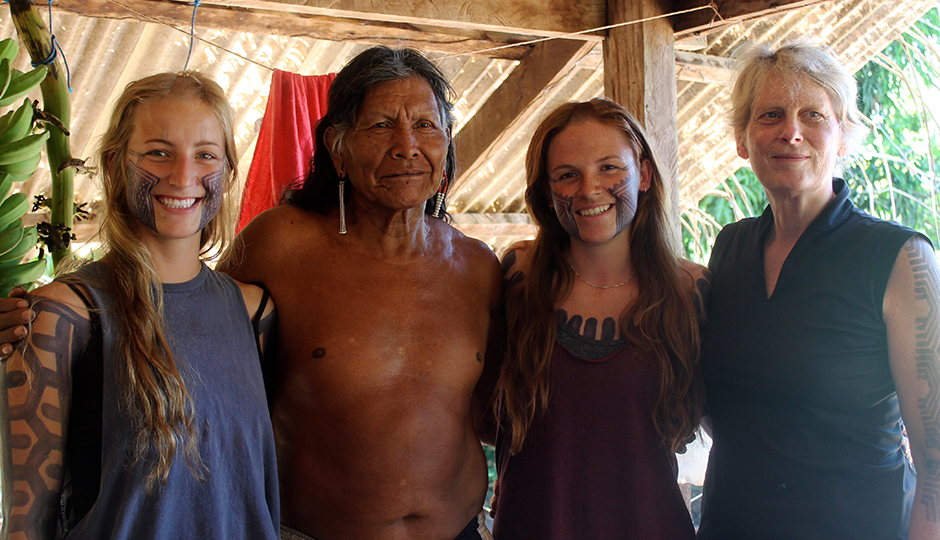After fifth consecutive years conducting conservation and ecology studies in the southeastern Amazon rainforest, University of Miami Ph.D. student Jacqueline Ballantyne is ready to share her knowledge in a new course next spring.
The course, “Biodiversity, People and Conservation of the Amazon Rainforest,” will introduce students to the people, geography, and biodiversity of the Amazon rainforest, as well as its connection to global climate change.
“The Amazon is a global resource that touches everyone on a worldwide scale,” said Ballantyne, who plans to invite researchers who live in the Amazon and members of the Mebêngôkre-Kayapó Indigenous tribe as guest speakers. “It is the largest and most diverse tropical rainforest on Earth, and it’s home to 30 million people—about 10 percent being Indigenous.”
Ballantyne has spent numerous years working with the Indigenous tribe in Brazil and hopes to expose students to current Indigenous issues. According to Ballantyne, 9,000 Mebêngôkre-Kayapó live in one of the largest, contiguous rainforest segments left on Earth. “When I first visited the Amazon in 2015, which was my first summer in Brazil, working with the local Indigenous people was a life-changing experience for me.”
During that time, Ballantyne worked with the Mebêngôkre-Kayapó and local community members to train young adults as field assistants and community-based wildlife researchers for the region. She also helped conduct camera-trapping research to capture the movement of rainforest animals.
She was initially inspired to visit Brazil by her mentor, Dr. Barbara Zimmerman, a biology professor at the University of Toronto and the Kayapó Program Director and Tropical Ecologist for the International Conservation Fund of Canada.
“Dr. Zimmerman truly encouraged me to visit Brazil, and I immediately fell in love with the community and returned as a teaching/field assistant for my second summer in Brazil,” Ballantyne said.
Born in Ontario, Canada, Ballantyne earned her undergraduate degree in biology from the University of British Columbia, and her master’s degree in primate biology behavior and conservation from the University of Roehampton in London, England. In 2019, she taught the lab component of an animal behavior course at the University of Victoria on Vancouver Island. While preparing to teach her first course at UM, Ballantyne has worked alongside associate professor Mauro Galetti, a biologist, conversationist, and director of the John C. Gifford Arboretum. She is earning her Ph.D. in Biology here at the University of Miami.
“While searching for doctorate projects, I came across Dr. Galetti’s work and was immediately interested in his research,” she said. Ballantyne hopes the course will not only expose students to the Indigenous tribes of Brazil but also the Indigenous tribes of Florida. She acknowledges the Seminole Tribe of Florida, the Council of the Miccosukee, and the Miccosukee Tribe of Indian Affairs as the original owners of the land and hopes her students are inspired to learn more about Indigenous people around them.
She also encourages students and the UM community to take Caroline Laporte’s seminar, “North American Native and Global Indigenous Perspectives: Stories of Resistance and Resilience” to learn more about this subject. Laporte, who teaches courses with the College of Arts and Science’s Native American and Global Indigenous Studies (NAGIS) program, is a School of Law alumna and a judicial advisor for the Seminole Tribe of Florida. She is also an immediate descendant of the Little River Band of the Ottawa Indians (Bear Clan) of Manistee, Michigan.
“There is a large global outreach here in Miami, and I think it would be important for UM students to understand the international issues surrounding the Amazon and its Indigenous groups, as well as thinking locally about the Indigenous groups here in South Florida,” Ballantyne said.

